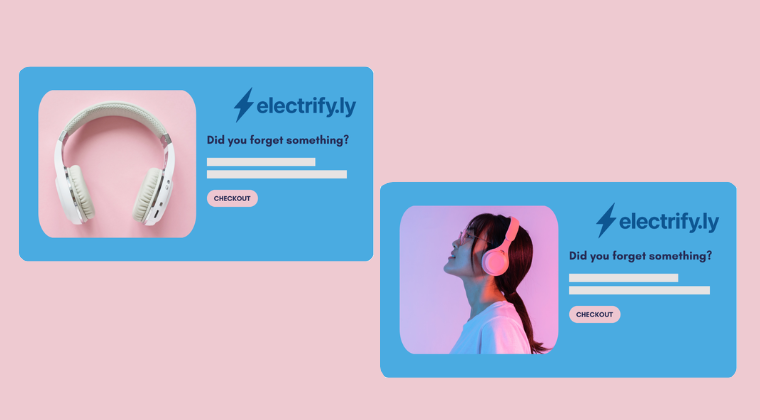How to set up effective A/B tests for overlays

Data-driven testing unlocks valuable insights, enabling you to optimise conversion rates, engagement, and revenue. But where do you start?!
With over a decade of experience in affiliate marketing, we know a thing or two about what makes an A/B test truly effective. Here’s a sneak peek into our brand new eBook: The Ultimate Guide to A/B Testing to Boost Conversion Rates.
Let’s take it back to basics. Read on for a snippet of our chapter on Setting Up A/B Tests, where we break down the fundamentals to help get you started.
Identify Your Testing Objectives
Before launching an A/B test, define what success looks like. Common goals include:
- Engagement or Click-Through Rate (CTR): Are users clicking the CTA button or interacting with the overlay, or do they dismiss it immediately?
- Conversions: Does the overlay lead to more sign-ups, purchases, or other desired actions?
- Average Order Value (AOV): Does the overlay influence users to spend more per transaction?
Having a clear objective ensures you focus on meaningful improvements rather than
just making random changes.
Choose Variables to Test
Once you know your goal, determine which elements of the overlay to test. Consider:
- Design: Colours, fonts, images, and animations can all influence user behaviour.
- Messaging: Headlines, body text, and CTA wording should align with goals and user intent.
- Placement & timing: Overlays could appear instantly, after a delay, or when a user is about to exit.
- Incentives: Discounts, free shipping, or exclusive content – different offers will likely
drive different results.
It’s important to test just one variable at a time to pinpoint what truly affects performance.
Follow Best Practices for Controlled Testing
To ensure accurate and truly meaningful results, follow these A/B testing golden rules:
- Define what “success” looks like: Be clear about your goals. Are you trying to improve conversion rate, boost click-throughs, or increase revenue per visitor? Set a minimum effect size – the smallest change that would still make a difference to your business.
- Keep test groups equal: Make sure your site visitors are randomly and evenly split between your original version and the test version. This helps avoid bias and ensures your results aren’t skewed by one group.
- Make sure results are representative: Make sure your sample size is large enough and your audience is reflective of your real users. And remember to test across different devices and times of day to get the full picture.
- Run the test long enough: We know it’s tempting to peek early and declare a winner – but patience pays off. Your test needs time to collect enough data to be meaningful. Ending a test too soon can lead to misleading results that won’t hold up over time.
- Test, learn, improve: Every test – whether it’s a win, a loss, or a draw – teaches you something. Document your findings, reflect on what you’ve learned, and use that insight to improve future designs, strategies and tests.
Think of A/B testing as a continuous cycle: test, tweak, repeat. Each round gets you closer to a desired experience that feels seamless and works like magic!
For more advice on testing, how to measure and interpret results, optimising and scaling for success, as well as plenty of real life examples to inspire you, download our free eBook.

Patience is intent.ly’s marketing executive, with a passion for creative content marketing and social media strategies.

